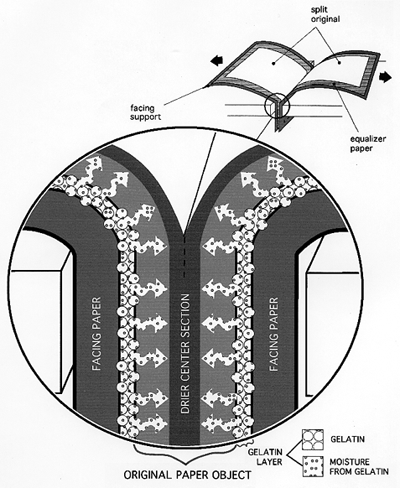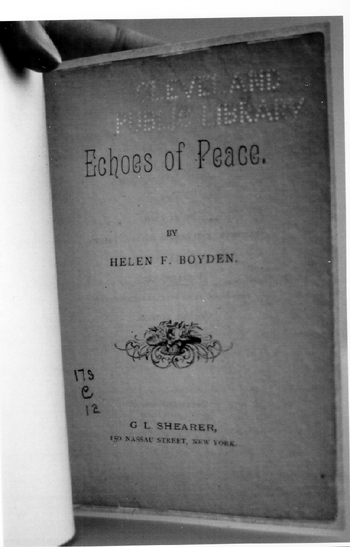PAPER SPLITTING: HISTORY AND MODERN TECHNOLOGY
IRENE BR�CKLE, & JANA DAMBROGIO
1 1. WHAT IS PAPER SPLITTING?
Contemporary paper splitting is an invasive treatment process designed to strengthen paper artifacts so deteriorated that their physical use is severely restricted. The brittle paper sheet is split in half through its thickness, and a strong, stable, thin paper is inserted in the center before the original paper halves are reunited. The treated paper regains its functionality (M�ller 1989; Gast 1993; W�chter et al. 1996, 1997). Today paper splitting is considered a library and archives mass preservation tool that presents an alternative to other methods of preserving weakened paper artifacts, including encapsulation in polyester film, surface sizing, lining with thin tissues, leaf-casting, and lamination. Candidates for this treatment are materials damaged by water or mold attack; documents severely embrittled by corrosive media, especially iron gall ink; and 19th- and 20th-century papers deteriorated due to acidic ingredients, foremost alum used in paper sizing and lignin present in wood pulp (fig.1). Prior to splitting, original papers may undergo preparatory treatments such as pest eradication through anoxic fumigation; disinfection through gamma radiation; washing in alkalized water; and leaf-casting (W�chter 1999b). Following these treatments, both sides of the dry or lightly dampened original are temporarily faced with absorbent paper or polyester support sheets that are adhered with a viscous gelatin solution (fig. 2). While the laminate is subjected to slight pressure, the gelatin is allowed to bond firmly with the three papers. During pressing, water contained in the gelatin layers penetrates deeply through both sides of the original, moistening the interior. The laminate is removed from the press, and the facing supports are pulled apart, each side ideally carrying one-half of the split original (fig. 3). The split halves are coated on the inside with an adhesive; a thin cellulose-fiber paper core is inserted; and the halves are reunited. The core adhesive may consist of methyl cellulose and a small amount of acrylic resin emulsion, or it may be a starch paste. Alkaline buffers may be added to the core tissue and core adhesive, and the latter may also receive antifungal agents. The facing papers are removed via aqueous treatment, which may involve a protease enzyme bath and several subsequent rinsing baths at elevated temperatures. Stabilized materials can be microfilmed or preservation-photocopied and can be reintegrated with their collections (see figs. 1, 16).
Fig. 1.
Brittle 20th-century newspapers at the Thuringian University and State Library, Jena, seen before and after strengthening by paper splitting
 |
Fig. 2.
Thin section of a paper to be split with facing papers adhered, seen under UV illumination. The gelatin (fluorescent whitish layers) coats the surface of three papers without penetrating into their interior. A 30% (w/v) gelatin solution was used. Courtesy of Gesa Kolbe and Professor Gerhard Banik, Staatliche Akademie der Bildenden K�nste, Stuttgart
 |
Fig. 3.
Diagram of a paper in the process of being split. The facing papers are adhered with gelatin to the dry or lightly dampened original paper. Moisture from the gelatin penetrates the original paper. The splitting occurs in the central portion of the original. Diagram by Sam Bryer
 |
Fig. 16.
Title page of a 19th-century book owned by the Cleveland Public Library and strengthened by splitting at the ZFB, Leipzig. A narrow margin of leaf-cast paper protects the original page edges.
 |
|



